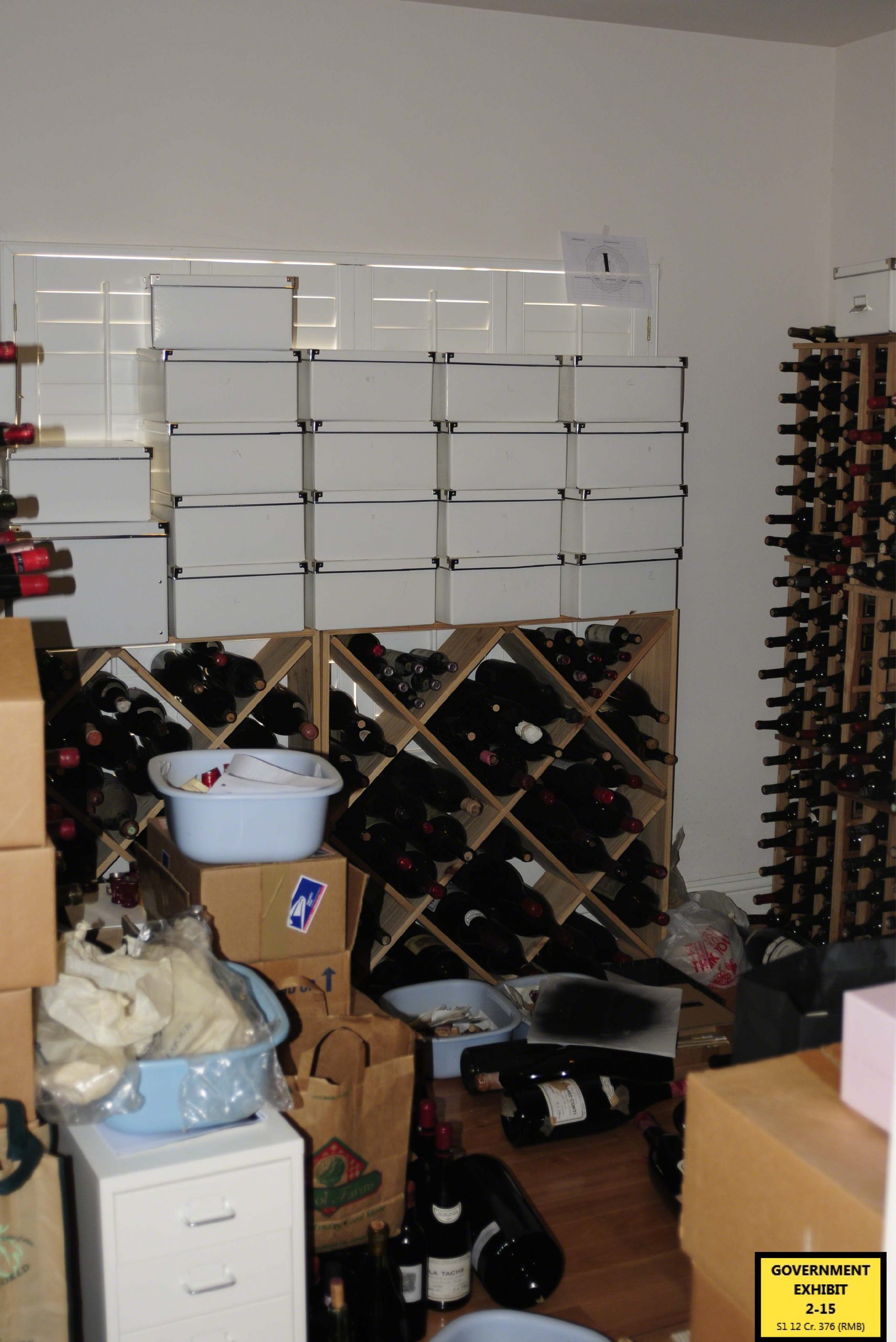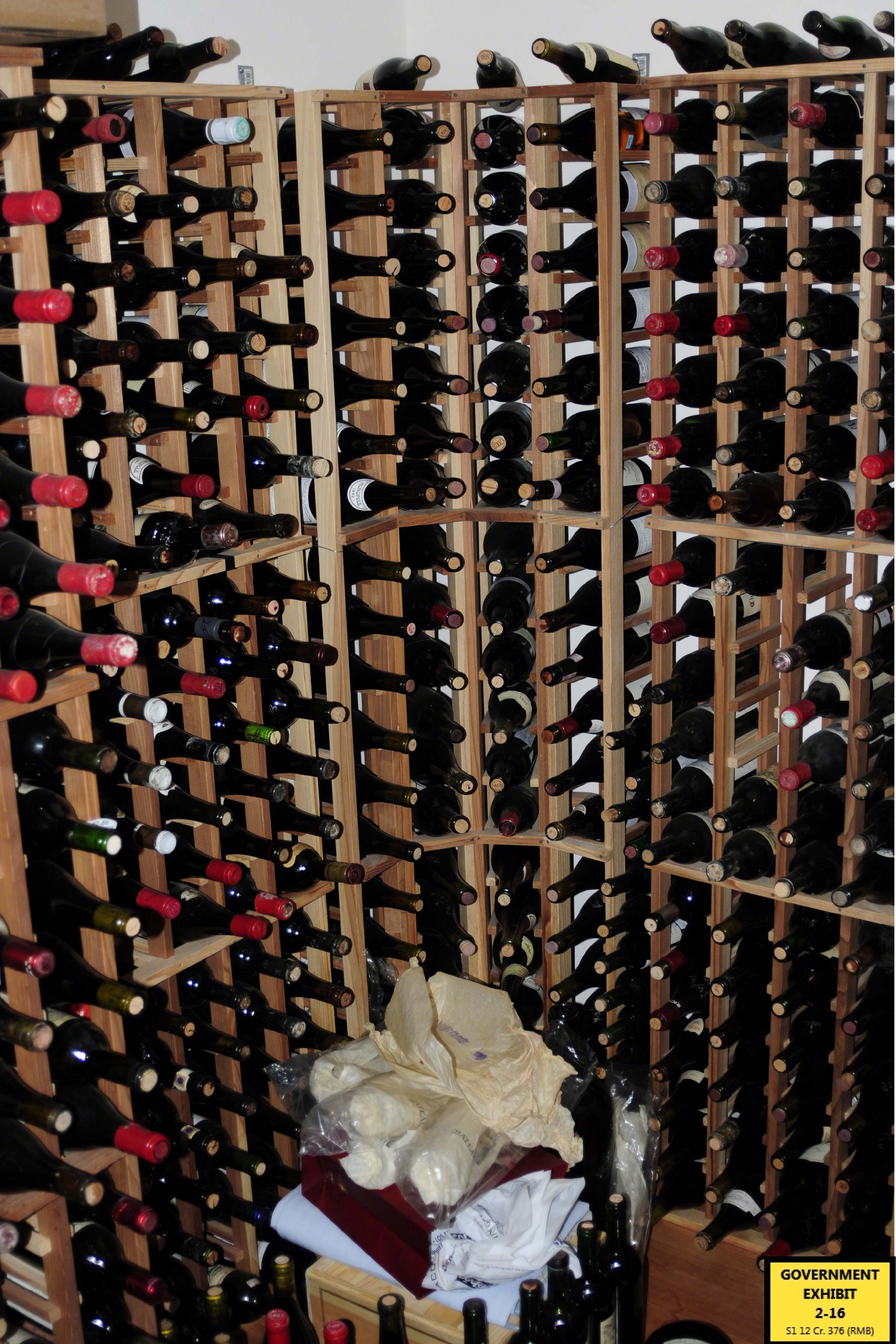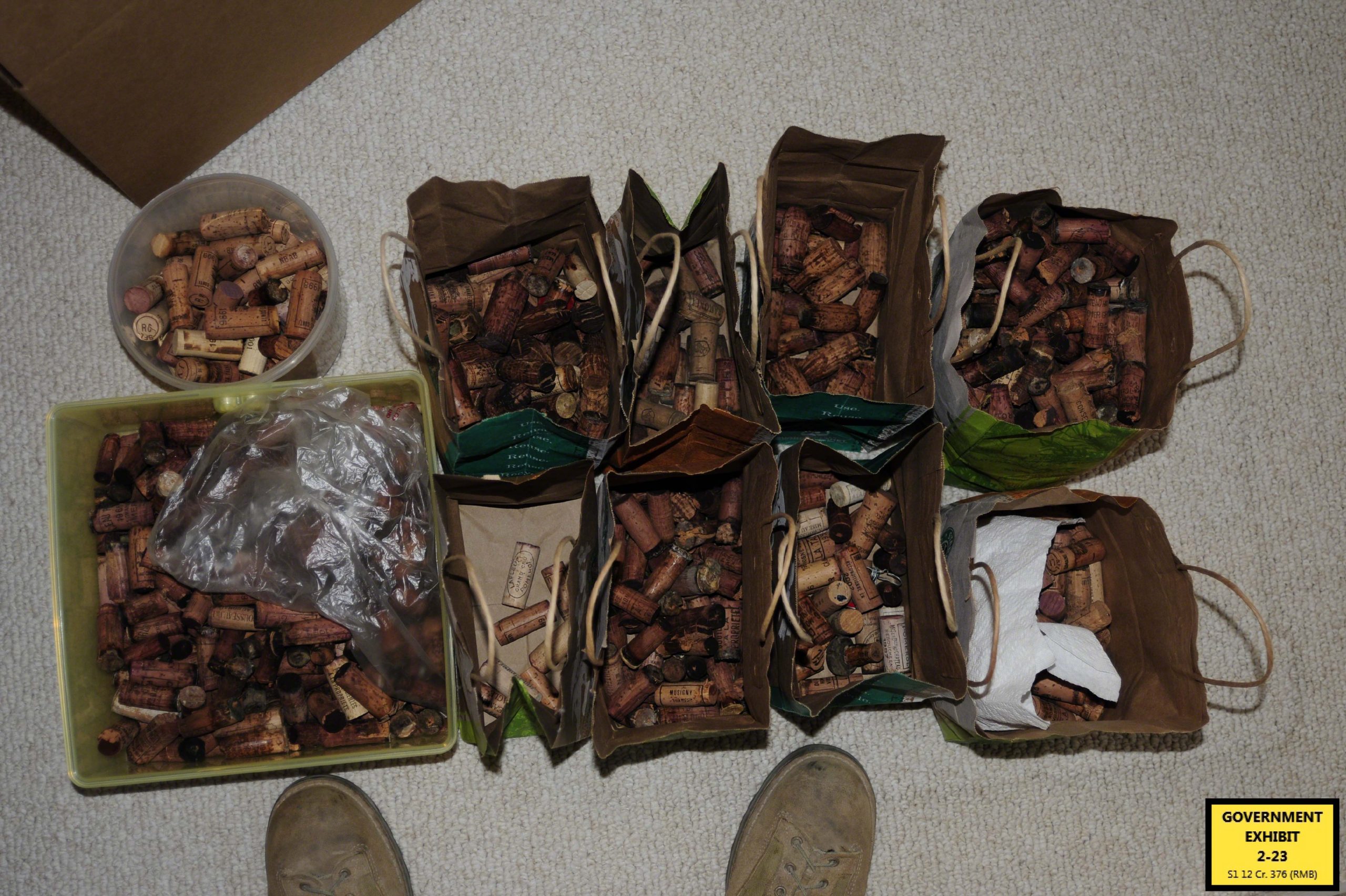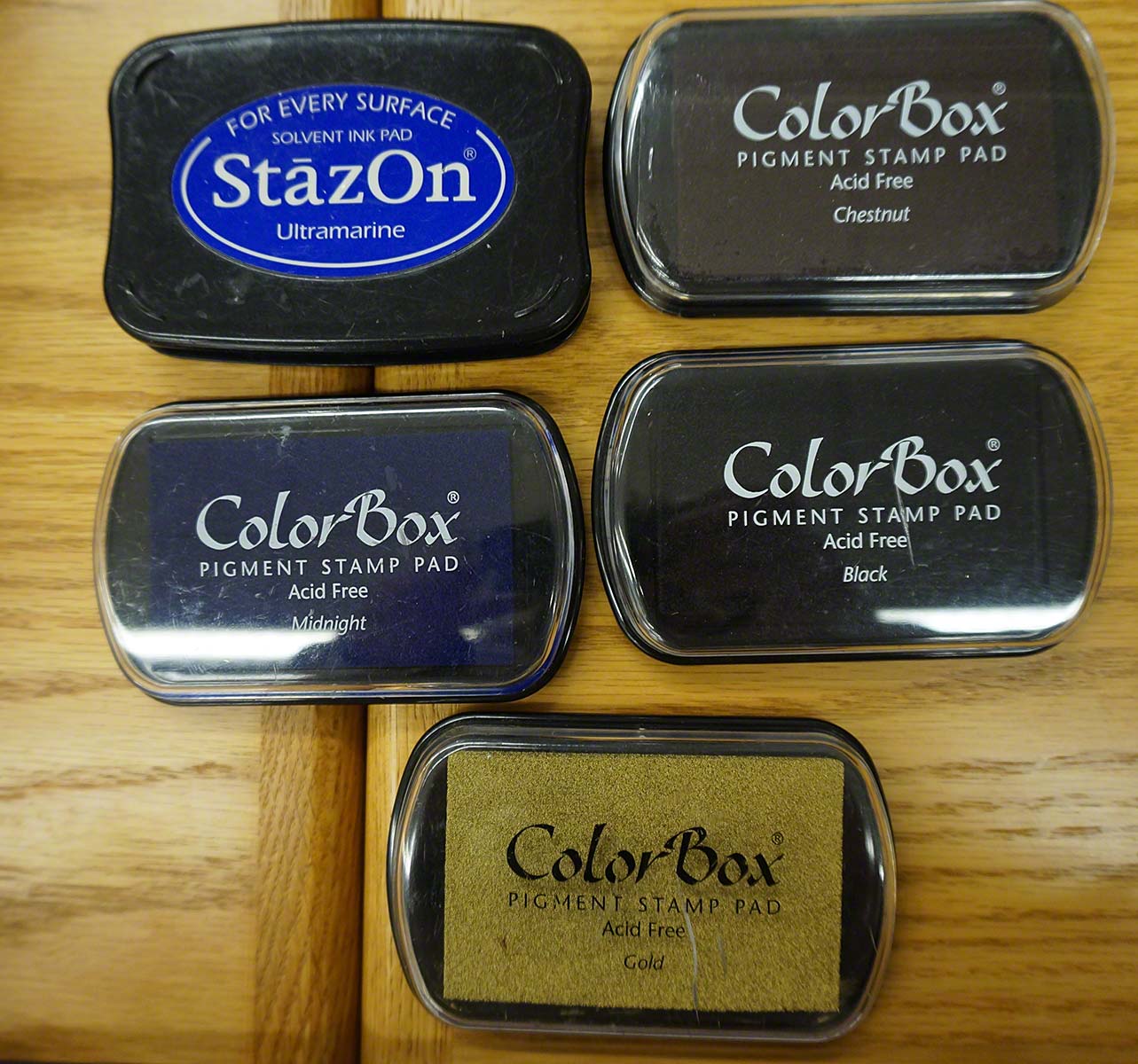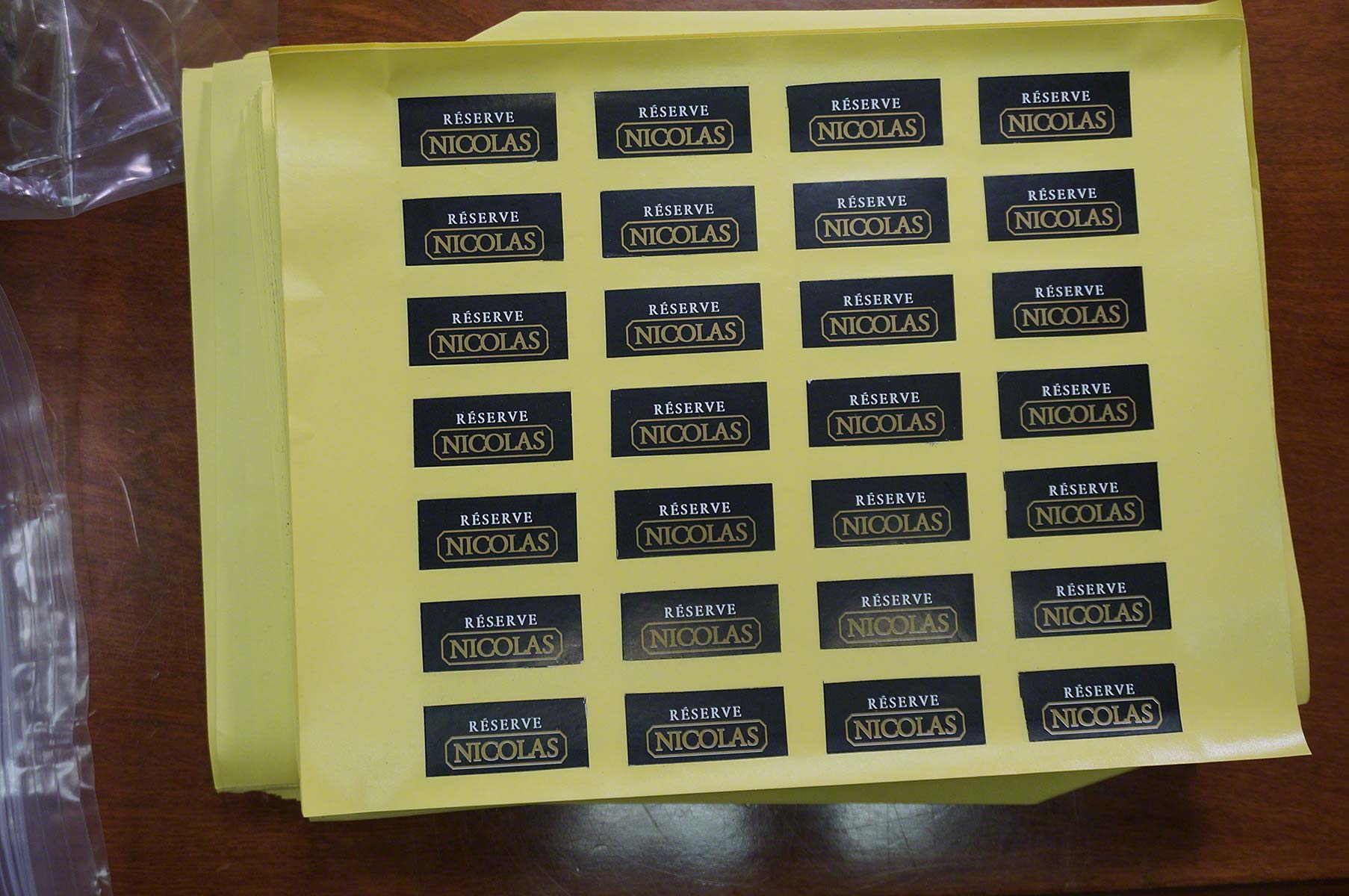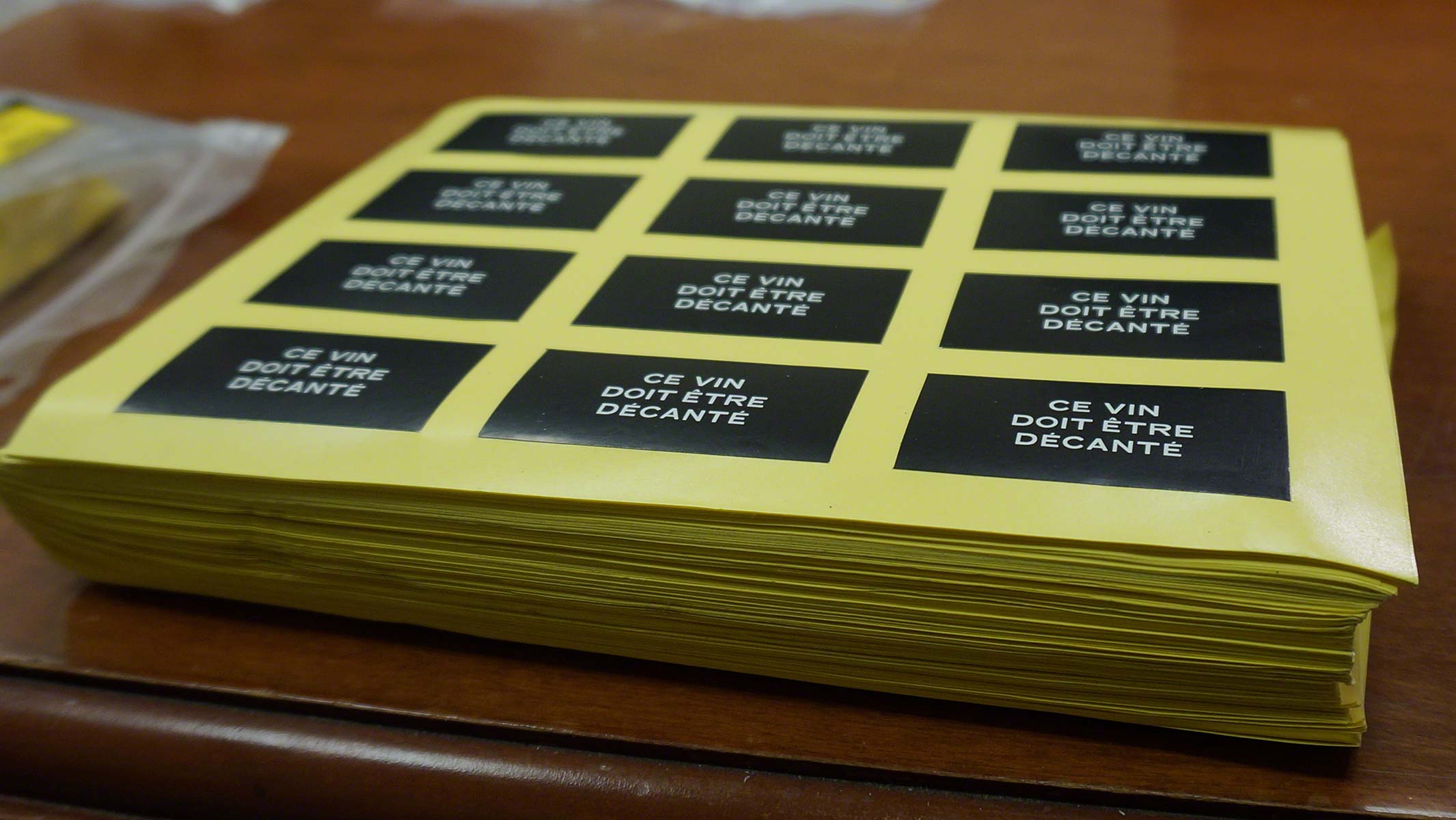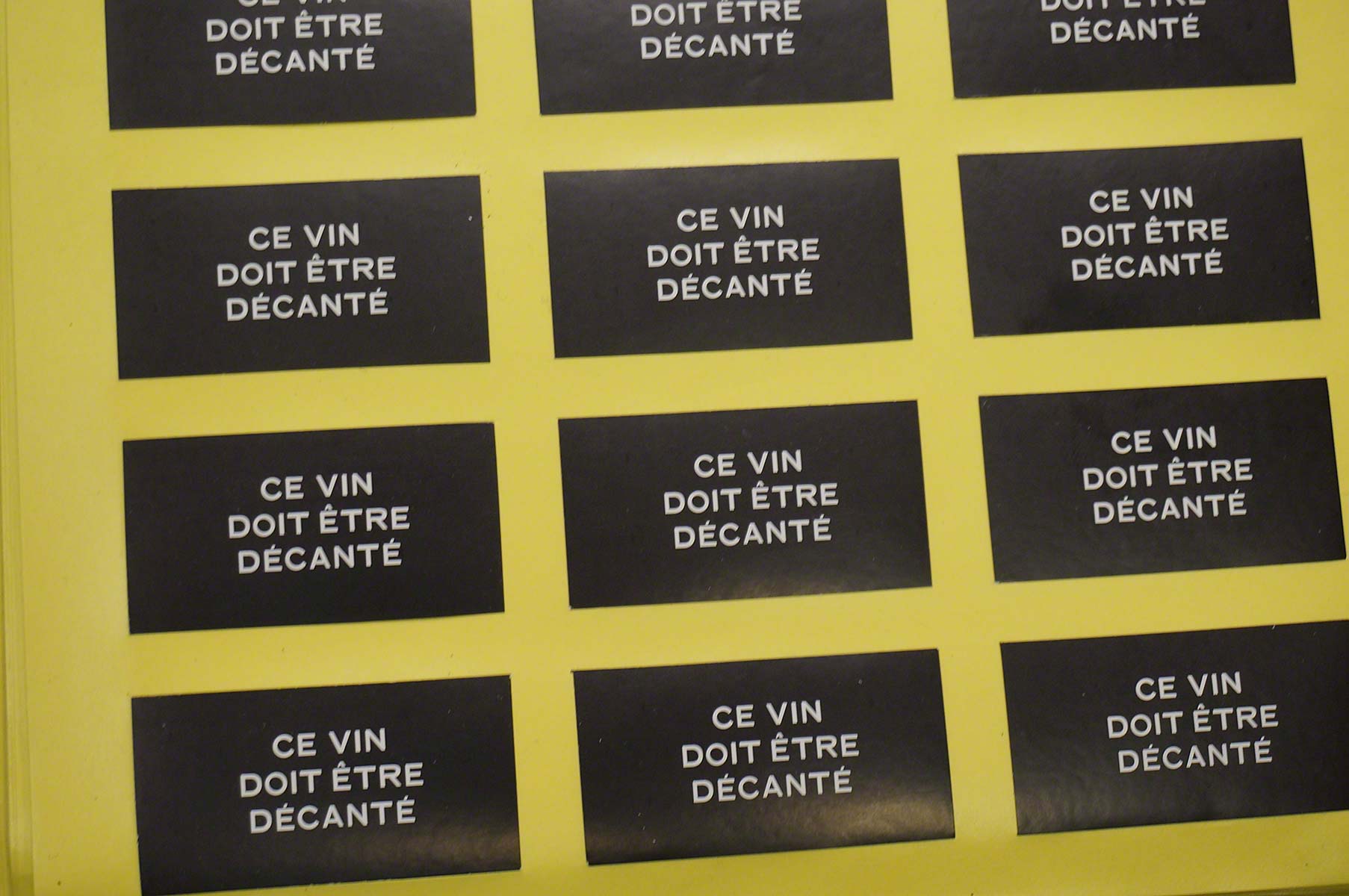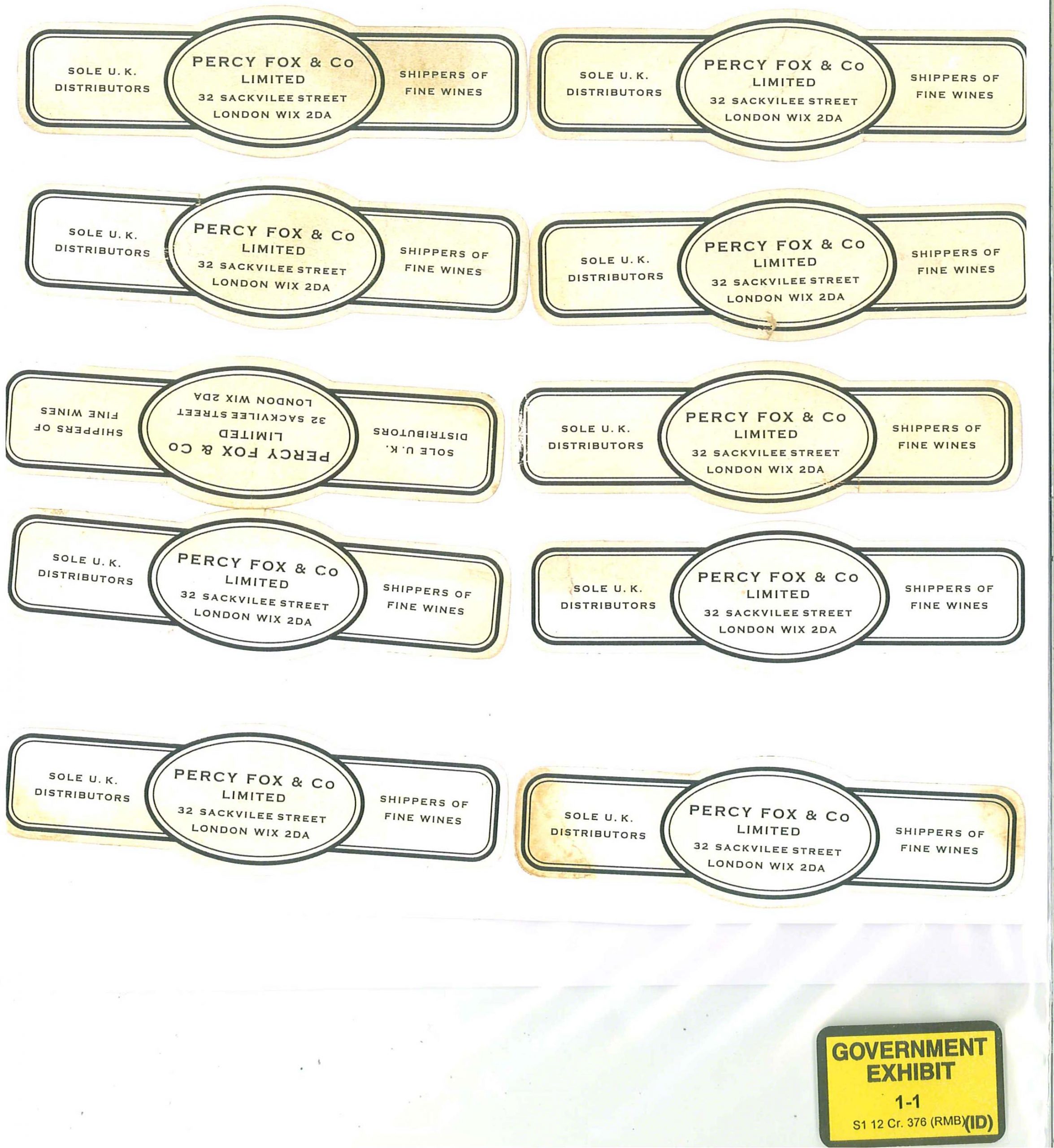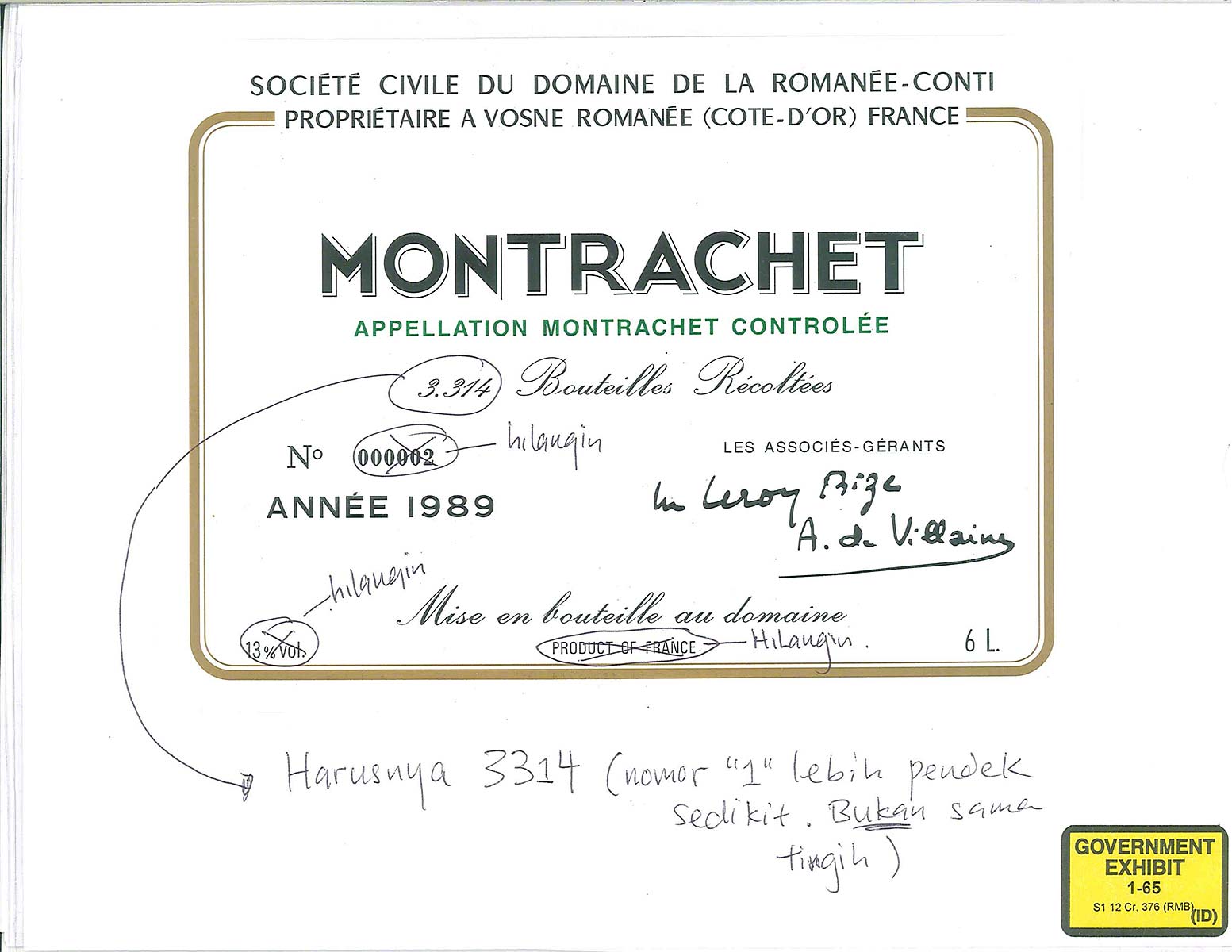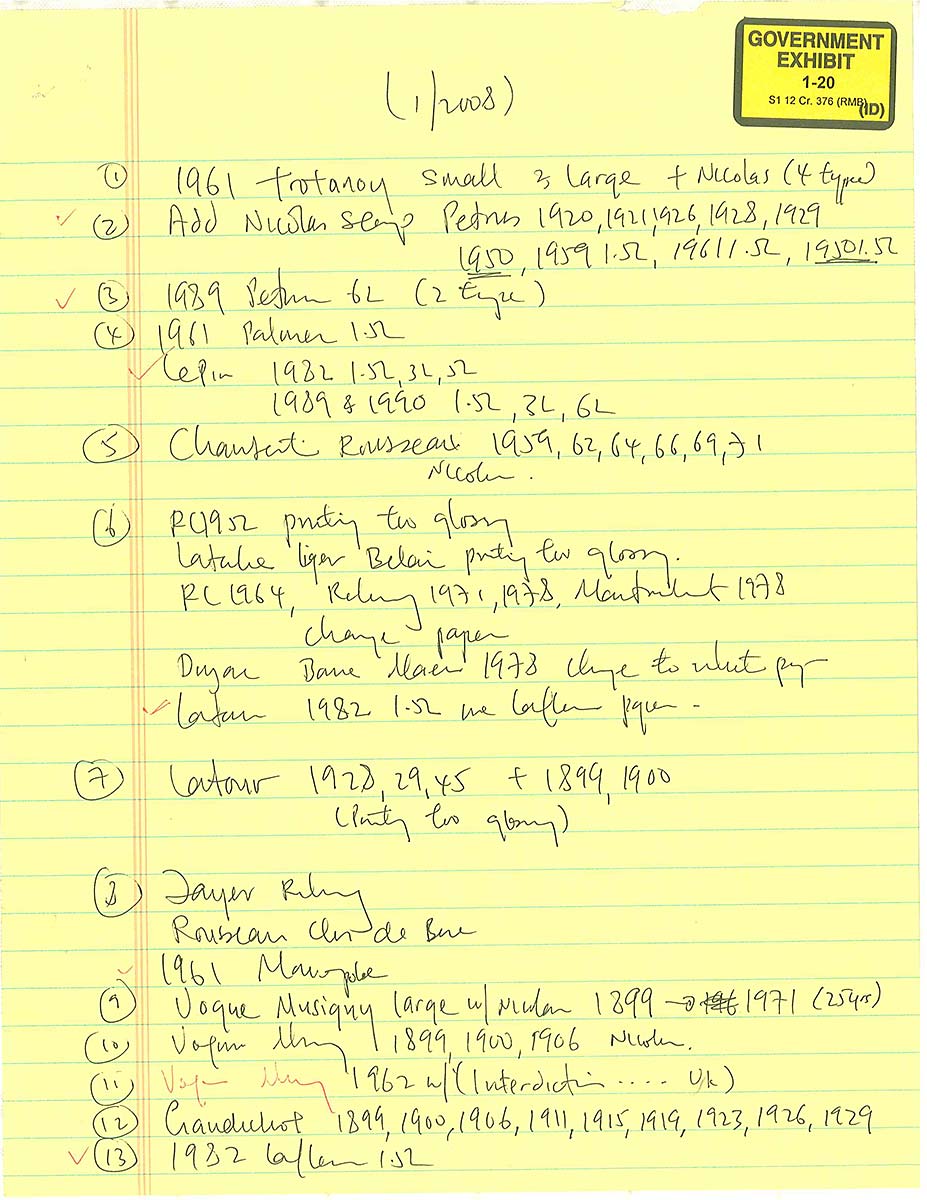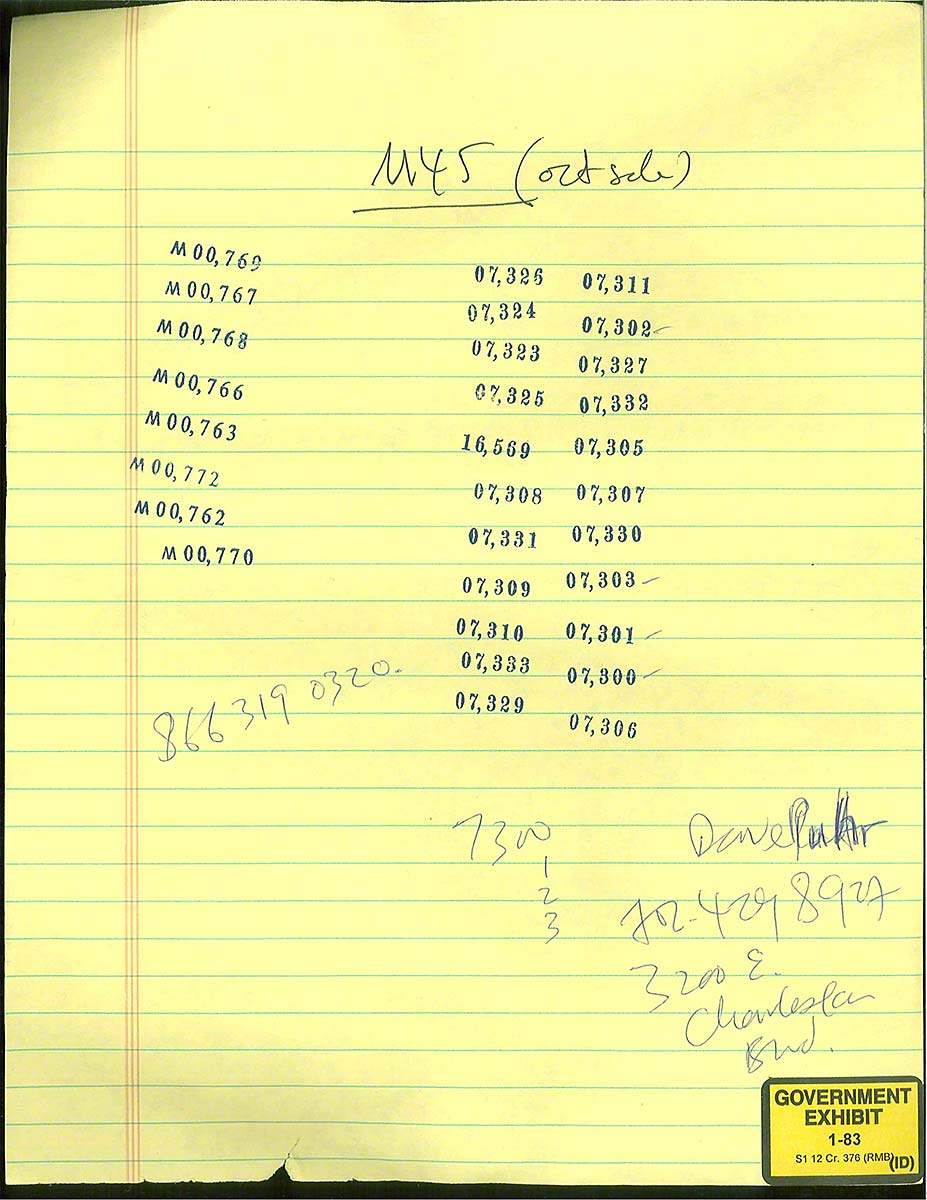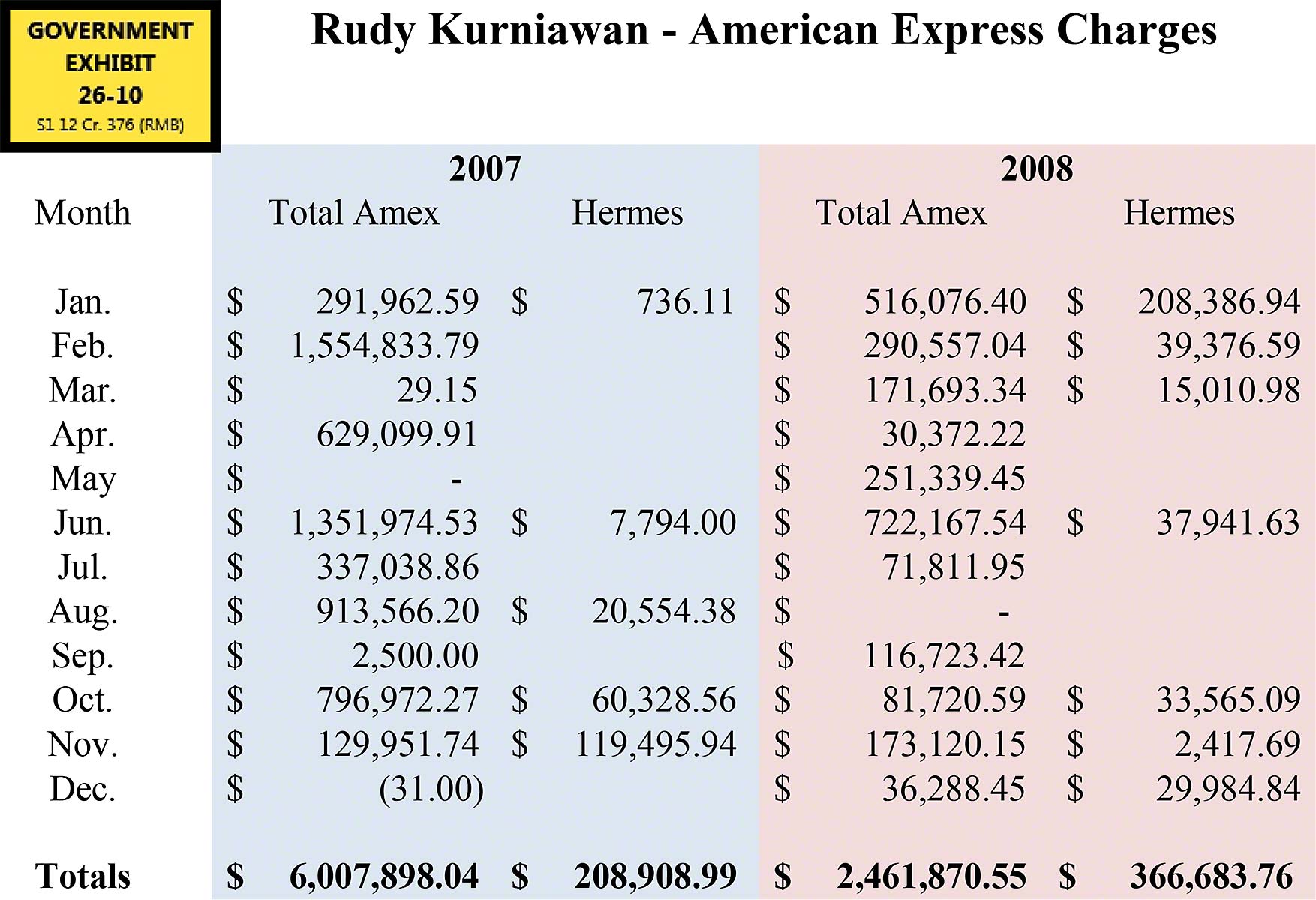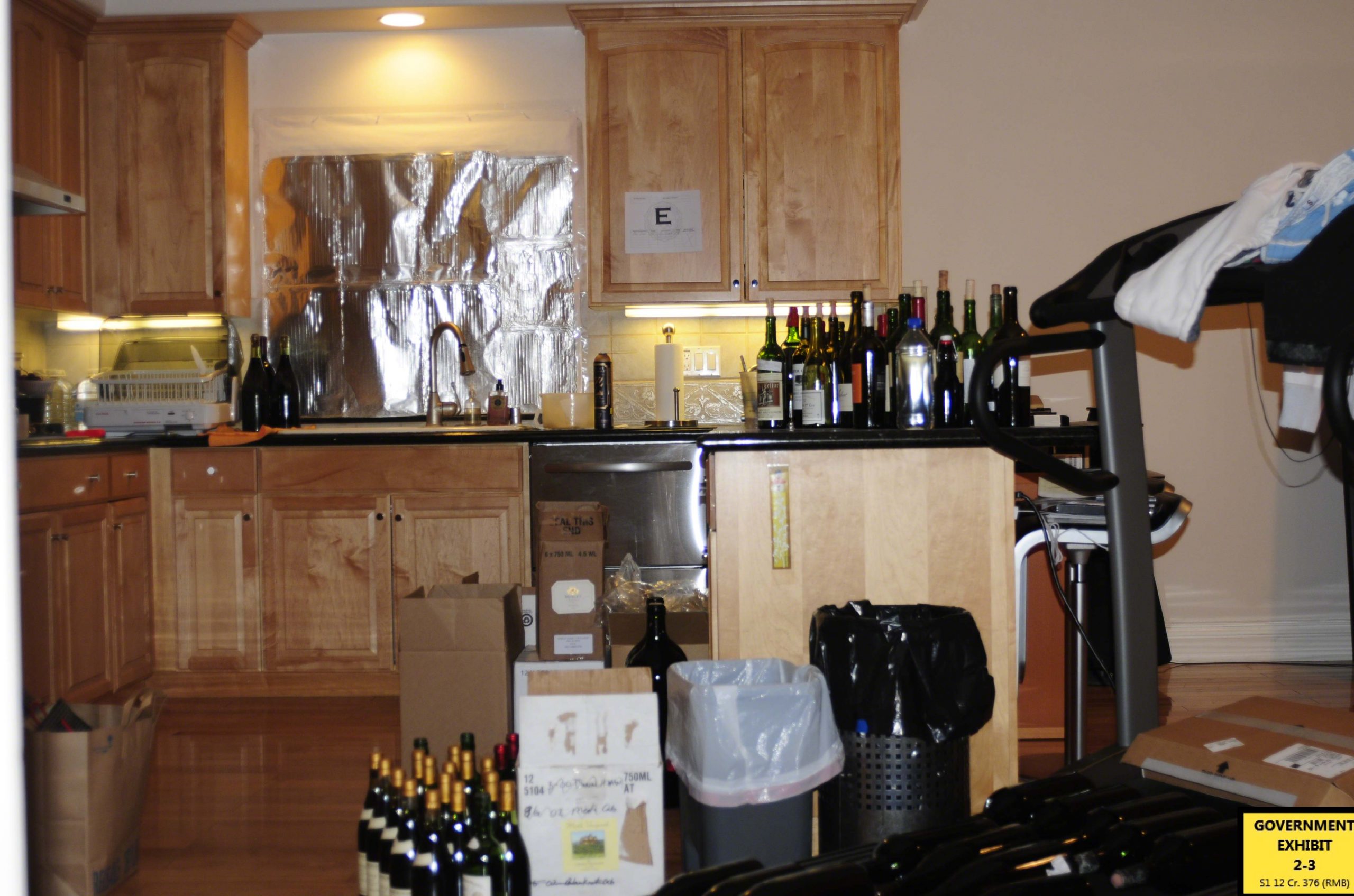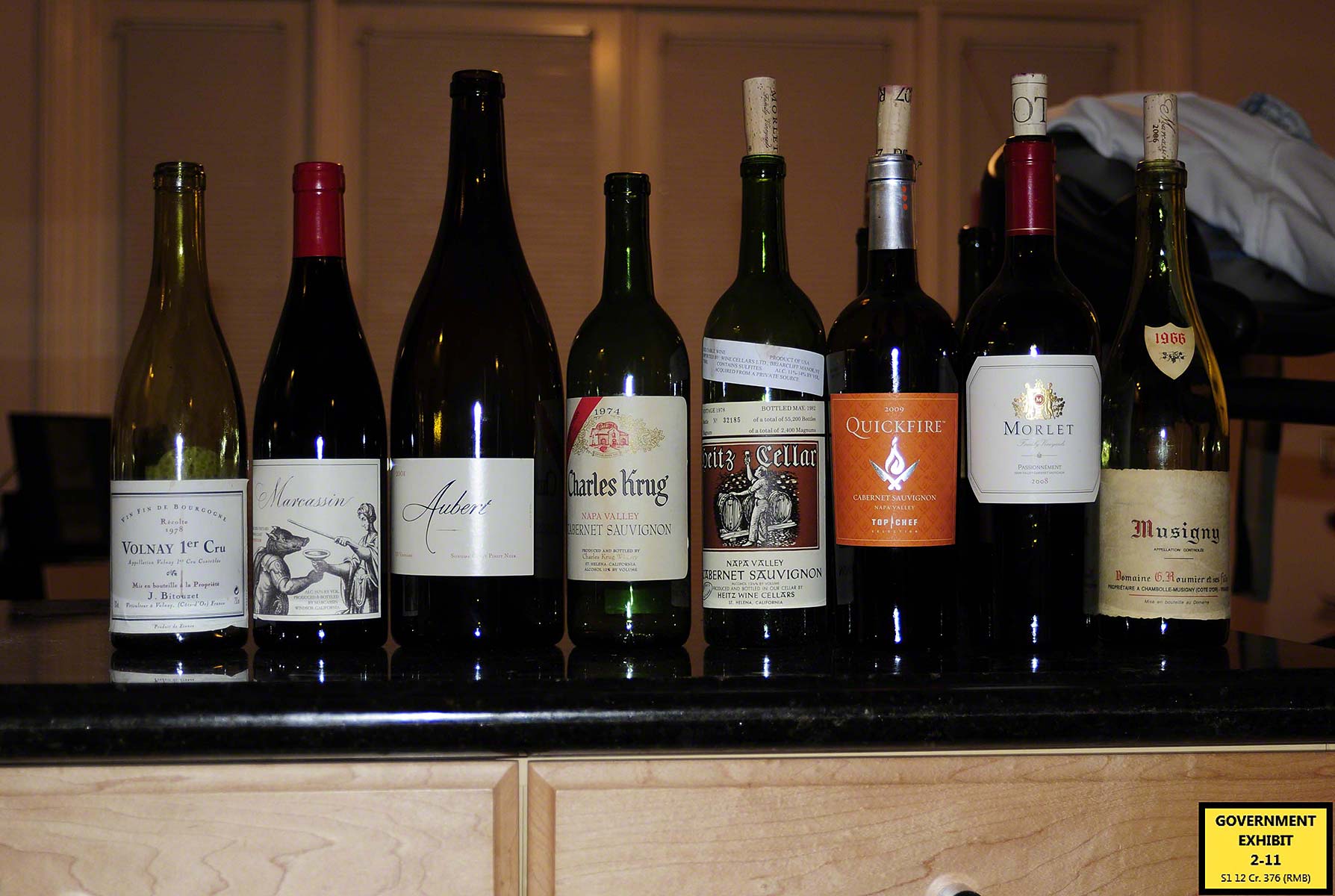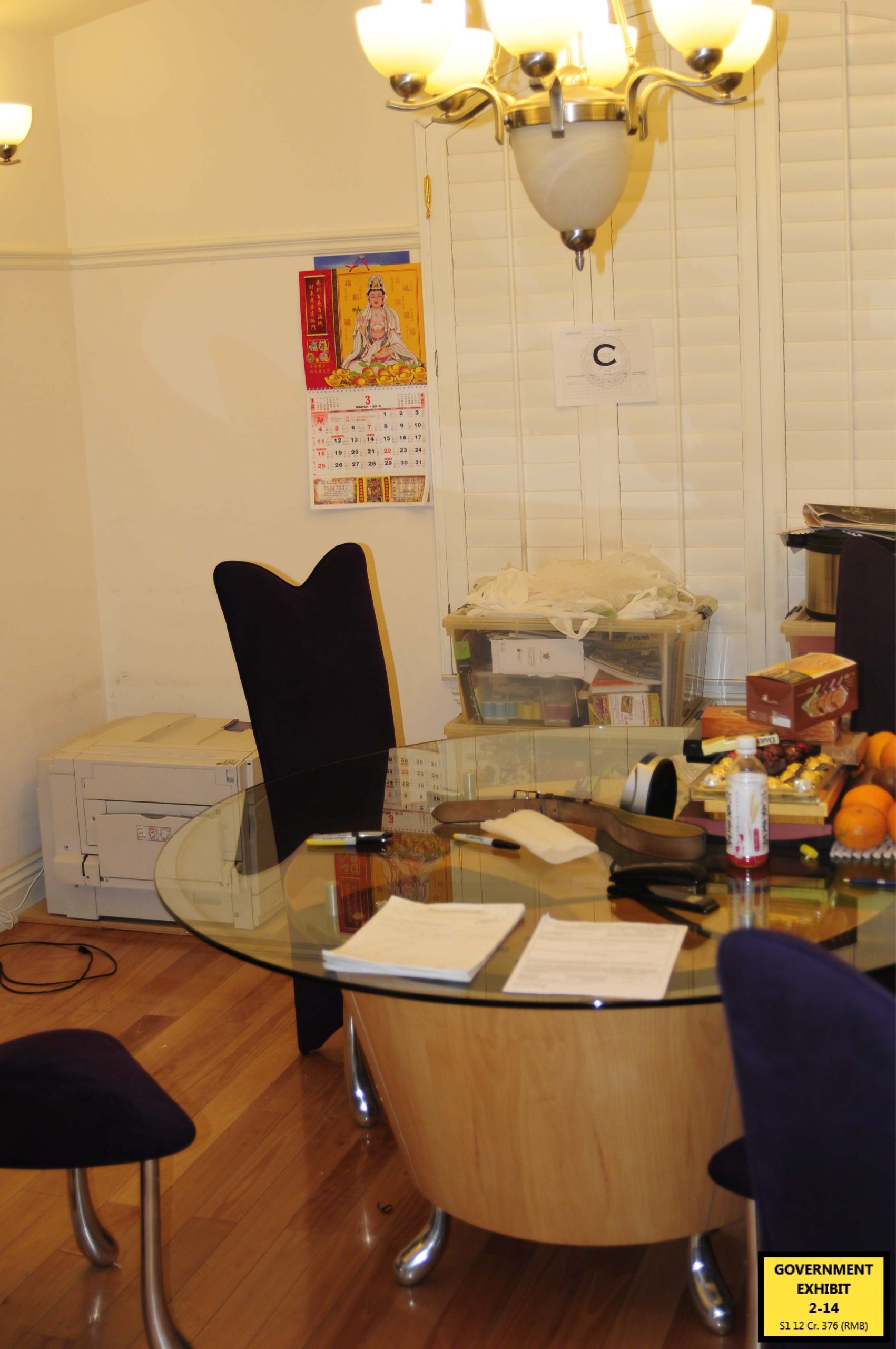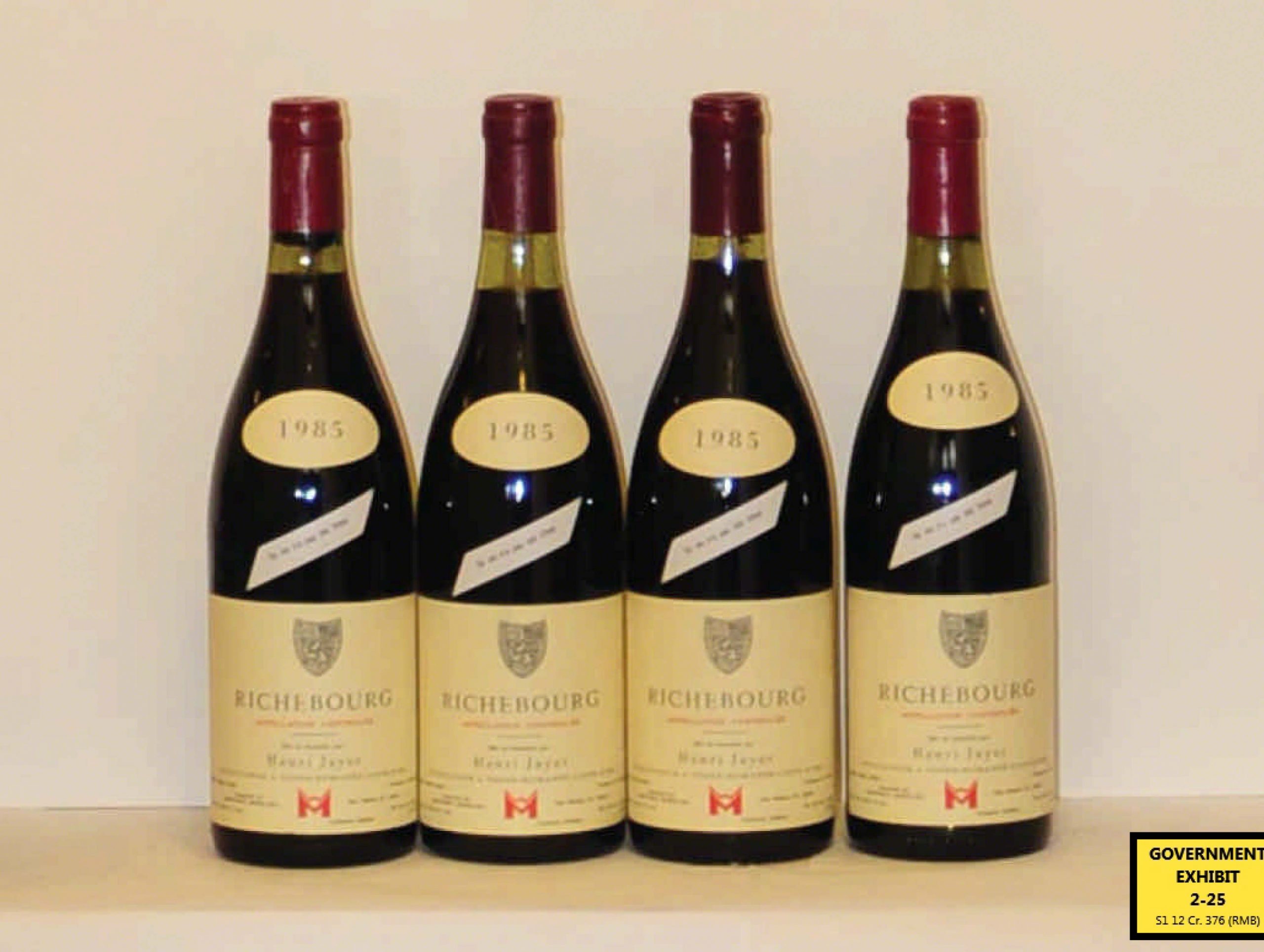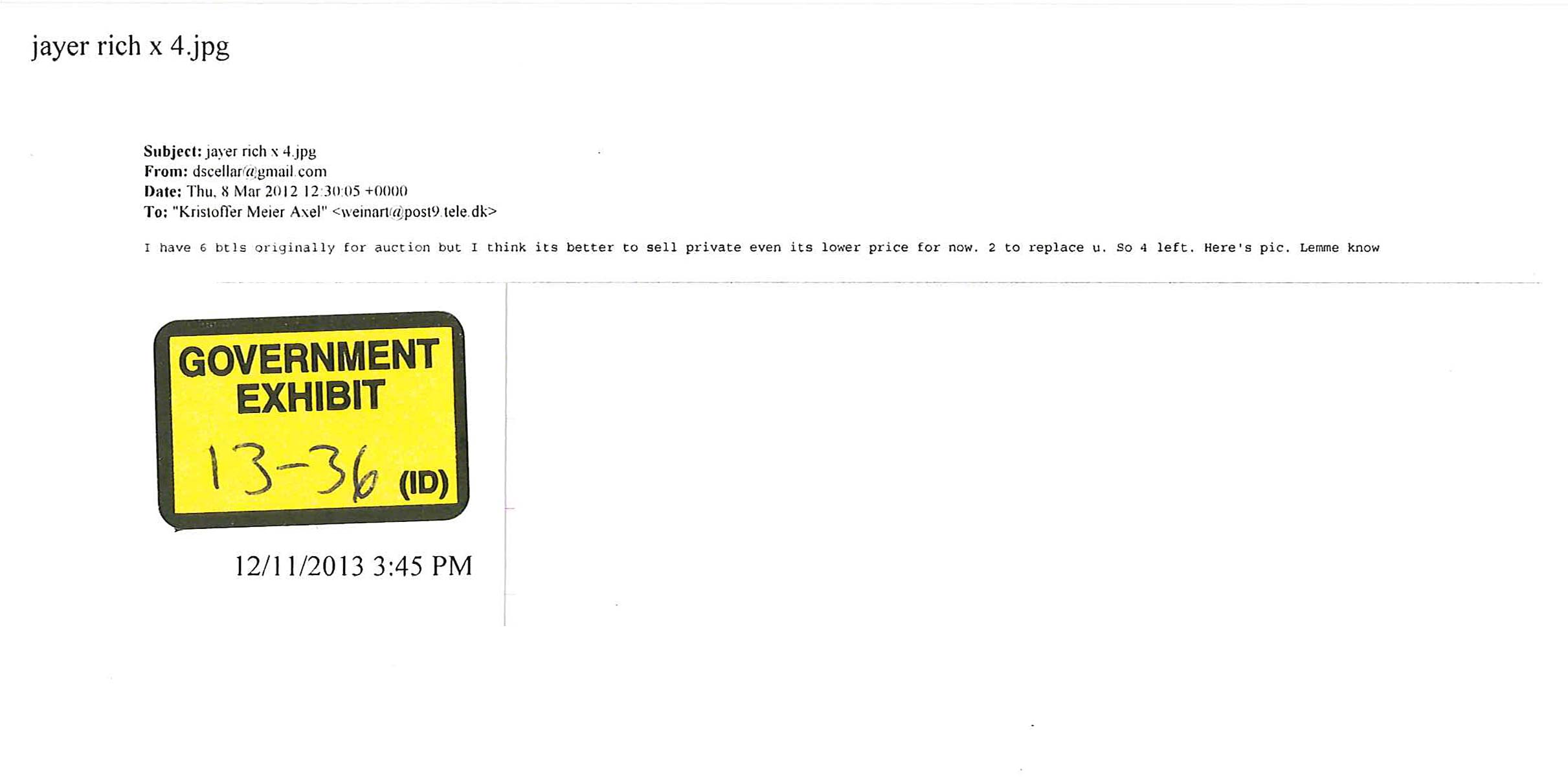The Trial: Part 2
Rudy Kurniawan’s Trial
A Multi-Part Feature on the trial of Rudy Kurniawan, including the transcripts, testimony and evidence that put the largest wine counterfeiter of our time behind bars.
THE TRIAL - PART 2
DAY THREE: WEDNESDAY 11TH DECEMBER 2013
Day three opened with a bit of controversy in the court regarding the transcripts (from which this summary is being provided), which Judge Berman had discovered only because a friend of his had mentioned he was following the trial. Both sets of lawyers were also surprised that these were available, and Mr Mooney commented that the court had said no to Court Direct – the transcription service. Judge Berman undertook to look into the matter.
Once the court was in session, but before the jury was present, Judge Berman clarified why he had asked some questions – specifically to ensure that the jury understood a particular point that was being made. He also noted that he had accepted certain emails between Rudy Kurniawan and John Kapon into evidence, over defence objections, on the understanding that the government would lay a foundation with respect to those emails through the testimony of another witness or witnesses; he emphasised that if proper connection is not made, he may consider his ruling admitting the emails into evidence.
Judge Berman also noted that even though he had requested that there not be any direct feed from this proceeding to the public, there does seem to be one, and he was endeavouring to ensure it is discontinued, because there is no authority for anyone to record the proceedings and then transmit it to the public in real time.
SA James Wynne then resumed his testimony, with Jason Hernandez questioning him.
Witness: SA James Wynne, FBI (cont’d)
Wynne continued his testimony from the evidence table, showing the jury the items recovered from Kurniawan’s house, including labels for a number of Bordeaux and Burgundy wineries.
He then returned to the witness stand to look at additional photographs taken of Kurniawan’s home.
In one of the bedrooms, there were more wine labels, stencils and stamps that would be used for serial numbers. There are also scans of labels that have been printed or copied to regular 8×10 size paper. There are bags and containers of used corks.
There are also stamp pads for use with the stamps.
Agent Wynne also identified the stencil found in Kurniawan’s house for applying to wooden cases – in this case, for DRC, and one for La Tâche 1978. He also highlighted the bag of wax sticks, which could be used to seal the cork.
There was also a box containing bags of capsules in plastic bags, each of which had annotation referring to a master list that was in Kurniawan’s house. There was also a spiral notebook full of tasting notes, starting in October 2009.
There were also packs of labels for various producers.
There were also bags of strip labels and import labels, as well as bags of Reserve Nicolas labels and instructions to decant.
Hernandez then highlighted a set of Percy Fox labels, with the address incorrectly spelt (as Sackvilee Street, rather than the correct Sackville Street). Later, Hernandez showed a different label, with a correct spelling of Sackville Street, but with Foy rather than Fox written.
There were also packs of labels for Le Pin, Cheval Blanc, Mouton Rothschild, a pack of back labels for Screaming Eagle, labels for de Vogüe, Roumier, Jayer, Chateau Latour and others.
And finally from this room there were a selection of stamps with various logos and other words on, including “rebouché”.
Mr Hernandez gave a demonstration of the “Etablissements Nicolas” stamp, and of the “Romanée Conti” stamp.
There were also some vintage labels from 1926 – rather improbably, self-adhesive.
Agent Wynne then testified about a number of bottles of wine that had been in Rudy’s house. Included in this was a bottle of 2006 Marcassin Pinot Noir from California, which had marked on it “40s/50s DRC”, which was the same marking as a bottle of 1990 Laboure-Roi Gevrey-Chambertin. There was also a bottle of DuckhornVineyards with “40s – 60s Pomerol Graves” written on it.
Wynne also testified about an unlabelled bottle that had silver writing that said “1988 RC? 1875?”. There was a bottle labelled Romanée-Conti 1899, with a wax capsule and the Nicolas decant sticker on the back. Wynne then identified a bag containing a Romanée-Conti label for a vintage 1899 and a Nicolas decant sticker. He then performed a similar exercise for a bottle of 1945 Romanée-Conti.
He finished by testifying about some of the printed documents that were found in the house, including Exhibit 1-65 which was an image of a DRC Montrachet label. This document had notations on it in Indonesian, which were subsequently translated. (All the translations were subject of stipulations – that is, the accuracy of the translations was not disputed by either the Government or the Defence.) The translations seemed to comprise instructions – for example “make the number “1” a bit shorter. Not the same a bit higher.” Wynne also testified about Exhibit 1-91, in which a number of items, including number of bottles, the serial number and the signatures are cut and pasted onto it.
Hernandez then directed Wynne to Exhibit 1-89, an article from the New York Times of 14 March 2007 by Eric Asimov entitled “Sniffing Out Fraud in the Bottle”, which commented that “The federal government is now investigating whether auction houses, collectors or importers knowingly sold wines that were not from the vintages listed on the labels.” The article was illustrated with a photograph of John Kapon, CEO of Acker Merrall & Condit, and referenced Kurniawan’s wine.
Exhibit 1-83
Hernandez then directed Wynne’s attention to Exhibit 1-83 which had M45 (October sale) at the top, and then a series of serial numbers, some beginning with M00, other 07,XXX, which were typical of Mouton Rothschild serial numbers. He then referred back to the catalogue for THE Cellar II (the sale for which was in October 2006), and matched two serial numbers of Mouton-Rothschild 1945 between the catalogue and the document: 07,332 and M00,767.
Wynne then testified that a number of electronic devices being offered into evidence had been found in Kurniawan’s home, transported by the FBI to New York, and examined by specialise computer people.
He also testified that the emails previously shown to the jury were emails that came to light through the search warrant for Kurniawan’s email address, along with two further emails obtained in the same way, but not previously shown to the jury.
Wynne testified specifically about exhibit 13-12, in which Kurniawan is trying to arrange for Robert Bohr of Cru restaurant to ship back to him a number of empty bottles, and insisting they be corked and unwashed, as he ostensibly needed them to “look originals for photo shoot”. There were also emails requesting AMC to source 100 to 200 cases of cheap 80s Bordeaux at $400 to $700/case for his brother Dar.
He also testified about an email exchange between Jancis Robinson MW and Rudy Kurniawan, in which she suggests writing in her column how Rudy addresses questions of provenance. She quotes him saying that “When I go to restaurants and drink great wines, I’m very careful to ensure that the empty bottles are trashed…” (which is, I’m sure the jury noticed, somewhat different from his exchanges with Robert Bohr). He also says (which she quotes) that he does not keep records – that he’s Asian and Asians don’t keep records. As Agent Wynne testified, however, the FBI found extensive bank and financial records and records of wine transactions, both in physical and electronic form.
Wynne then testified that he recognised six bottles of Domaine Ponsot wine as being the bottles sent to him by Susan Twellman on behalf of David Doyle, a Californian fine wine collector.
They moved on to a number of exhibits connected to purchase of materials for counterfeiting, such as wax (nearly $4000 worth), glue, Ingres DW Warm White paper – the same type as found in Kurniawan’s home, and ink pads. There was also an email regarding the wax, in which Kurniawan specifically states that he was looking for brittle wax like traditional French sealing wax; the company replied that it did not have French wax, but did have Scottish, which would break under flexing.
The Government then offered various banking documents into evidence, including a year’s worth of bank statements from the defendant for 2007. The defence objected to the whole document being entered, because it contains all kinds of irrelevant materials. Hernandez stated that it was relevant because Kurniawan had told Fine Art Capital he spent $150k a year; Judge Berman noted he had already said he would allow it. The same objection was raised to Kurniawan AmEx statements, and the same decision – it was allowed, as was a summary chart prepared by Wynne of the expenditure on it.
Special Agent Wynne also testified that, in addition to the Hermes expenditure he had separately calculated in the chart, there was approximately $100,000 more in additional personal expenditure – restaurants, clothing, private airline travel, etc. – in 2007, and over $350,000 in 2008.
Finally, Wynne testified that he recognised a 1947 double magnum of Pétrus as having been delivered to him by Bill Koch’s representative, in connection with this case.
Wynne – cross-examination
Jerome Mooney then cross-examined the witness. He started with Exhibit 26-10, the chart of AmEx expenditure in 2007 and 2008. Mooney asked if Wynne was aware that other people used that account, specifically Kurniawan’s mother. Wynne stated that the charges are in Rudy Kurniawan’s name; he was aware of women’s apparel purchases (e.g. from Chanel), but that Rudy Kurniawan remained responsible for those charges. Mooney said that he was not questioning that, but whether or not Wynne knew he lived with his mother, an elderly Chinese woman, which Wynne agreed. Mooney then said that Wynne “knew they came from a wealthy Indonesian family”. Wynne replied that he had heard it(he carefully avoided saying he “knew” it).
Mooney then argued that when Wynne separated out the Hermes charges, he decided that they should all go on the chart whether or not it was Rudy purchasing things for himself or not. Wynne replied that there were separated charges to Teddy Tan and Dar Saputra – Kurniawan’s brothers – and he had only selected charges attributed to Kurniawan as broken out by AmEx. Mooney noted that over half the Hermes charges in 2007 and 2008 were between November 2007 and January 2008 – about $330k. Mooney argued that this was for gift giving for Chinese New Year, and was evidence of Kurniawan being very generous with his family, as per the tradition in wealthy Chinese families. Wynne replied that he had no knowledge of that, nor of the family being his main source of income. Mooney also argued that, as Kurniawan was setting up a wine storage and retail business, the restaurants and plane travel were not private expenditure, but meetings with potential customers, hospitality for potential customers, and travel to see them – in other words, a business purpose. Wynne accepted (reluctantly) that, “theoretically I guess it could be construed that way”, but noted that since Kurniawan had an account for Terroir LLC, that appropriate expenses for his business should be run through his business account, not through his personal AmEx. Mooney noted that Terroir probably would not have had the funds to do this, and many start-up businesses would almost certainly be funded in the same way. Wynne noted that as early as 2002 Kurniawan had been buying wine, but that purchase increased in dollar amounts thereafter.
The defence then moved onto the search done at Kurniawan’s house, noting that the FBI initially just went there to arrest him. Wynne replied that after he was arrested an application was made for a search warrant, and after it was issued, it was executed. Mooney argued it wasn’t a very big house. Wynne replied that he did not know how many square feet it was, but that it had four bedrooms, a downstairs area, a separate garage, and was valued at $960,000.
Mr Mooney referred back to Exhibits 2-3, taken when the FBI first entered the kitchen, and 2-11, which Wynne confirmed was a photo of the wine bottles lined up to demonstrate what was in the kitchen at the time, so they did not make any mistake about what was there. Some of those bottles the FBI took pursuant to the search warrant, while some were left at the house.
Wynne confirmed that he did not know what the fill level was on any particular individual bottle. Mooney then said that he could not therefore know if the people in the house had been drinking these bottles of wine when the FBI arrived; Wynne replied that it was before 6am. Mooney clarified that he meant the night before, and that surely Agent Wynne had learned that it was Kurniawan’s practice to open many bottles of wine to taste. Wynne replied that he was aware this was the defendant’s tendency when in public, but that he had no knowledge of what Kurniawan’s private habits were.
Mooney then returned to Exhibit 2-13. He argued that Krylon, the spray paint visible on the right, is a modern paint, something that you would only be able to have purchased over the last 20 – 30 years. Wynne replied that he did not know.
Mooney then showed Wynne the re-corker, and argued that there was a size limit to the corks it could hold. Wynne said he did not know – he had never used one. Mooney argued then that corks for large format bottles are bigger than for standard bottles; Wynne again replied that he did not know. Mooney then asked for a large format bottle. One was produced, and he dropped the line of questioning.
He then noted that Wynne and the other FBI agents had bagged together various items that were not bagged at Kurniawan’s home, commenting that in doing this they were making a selection of what they thought went together, rather than what was actually the case. Wynne replied that in the case of the specific exhibit Mooney was referring to, 1-102, these were all items that were in the drying device, so they were together. Items that were packaged together, such as labels that were banded together, were packaged together. The FBI simply bagged everything and put exhibit stickers on them. The integrity of where they were found was maintained.
Mooney asked if there was a wine cellar in the house; Wynne replied that there was not, but that in effect “the entire house was a wine cellar, wine factory”. The thermostat was set extremely low, and they used space heaters in the two bedrooms.
Mooney then probed Wynne’s expertise in wine. Wynne noted he had learned a few things, but that he was not there to testify about any expertise to do with wine. Mooney then commented that “Even though you might think you know a lot of things, you are probably not going to venture a guess, right?…. Perhaps the only thing that’s more dangerous than somebody who doesn’t know is somebody who thinks they know”, a statement that was withdrawn on Jason Hernandez’s objection.
Mooney then asked about the wines in the house, and whether the FBI had done an inventory of them. Wynne replied that the FBI concept is to inventory only the items they take, and otherwise to leave things alone in the house as they find them, as best they can. They selected approximately 30 bottles from the house for their evidentiary potential – some from the kitchen – unlabelled bottles from the treadmill and the sink – and some from the storage room. Mooney then stated, and Wynne confirmed, that he had not taken 12 of the 18 or so bottles on the treadmill, and had not gone back to the house to look at them, and therefore had no idea what was in them (although Wynne noted that they had been photographed, and the photos presented as evidence). Mooney suggested that the FBI should have made sure the bottles on the treadmill and elsewhere were lying down, a more appropriate way to store wine. Wynne replied “I would venture to say, even with my limited knowledge of wine, that you don’t want to be laying them down on a treadmill.”
Mooney then asked about the large, commercial sized printer found in the living room. Wynne replied that he did not test it, nor did they take it into evidence. The other electronic items he knew were working, as they had got data from them.
Mooney queried whether or not there was evidence that Kurniawan had sent photos of the bottles that were, at the time of the raid, in the “photography” area to anyone. Wynne replied that he had looked at “many many images of bottles on any number of digital devices and in emails”; he could not say whether images of those four specific bottles had been included on any of those emails. There were, however, many images of bottles and/or lists of bottles that were being offered for sale.
Mr Mooney then took Agent Wynne through what appeared to be Kurniawan’s tasting notebooks, and photographs of him at various events.
Mooney pointed out a number of labels that appeared to have been peeled or soaked off, and corks that have been saved, and argued that there are people who will paper their walls with old wine labels, or corks. Wynne acknowledged he was aware of Mr Kurniawan having another house under construction, and Mooney suggested that perhaps he would use these to decorate the new house. (I wish at this point I could have seen the expression on Agent Wynne’s face.)
The Defence then referred back to Exhibit 13-32 [Exhibit 13-32] and noted that when Kurniawan said that he doesn’t keep records, this was in 2006. Mooney queried whether the records that were found, in fact, dated from after this date. He noted that it was, in fact, over five years between the date of this email and the date of the raid (March 2012), and suggested it was likely that the records were from after this date, so that Rudy was telling the truth when he said, at the time, he didn’t keep records. Wynne replied that although he could not testify to the volume of pre-2006 records, there were certainly some from 2002/2003.
The cross-examination ended.
Wynne – redirect
Jason Hernandez for the Government re-directed. He referred back to the chart of expenditure, and asked Agent Wynne why he had chosen Hermes in particular for the chart. Wynne replied that Hermes was the most significant single vendor from which Rudy was buying things that are personal in nature, and it “demonstrated to the best degree easily the amounts of personal expenses with respect to that vendor for 2007 and 2008”, and that on this chart he included only items that Mr Kurniawan had charged, not that his mother or brother had charged. There were also many other items that were personal in nature, not connected to Hermes, such as clothing from luxury brand stores such as Chanel and Louis Vuitton, travel, and restaurants.
Hernandez also noted that there had been some questions about the defendant’s family wealth, and Agent Wynne testified that he had not been able to confirm any source of family wealth. He also testified that over the period of analysis, the flow of funds was from Rudy to his family, and not the reverse: approximately $12m to Dar Saputra and $5m to Teddy Tan. He saw fairly nominal amounts coming to Rudy, and no evidence that there was any kind of family money in Indonesia.
Hernandez also asked Wynne whether he was familiar with the type of cork extractors shown in Rudy’s house – the “Ah So”, and with the traditional waiter’s corkscrew. Wynne agreed he was, and testified that the latter is more destructive to the cork.
Wynne also testified that in all the auction catalogues he had seen, bottles of wine had labels, as did all wine in the retail wine shops he had been in.
Hernandez asked why the FBI had not taken all the items from the defendant’s home. Wynne replied that they took representative samples, being limited by their ability to transport evidence, and being able to conduct the search carefully and quickly.
Wynne also confirmed, under the redirect, that he had discovered no document nor anything else to suggest that Rudy planned on wallpapering his home with wine labels. He also testified that he had never heard of anyone papering their home with wine vintage medallions or importer strip labels. He also testified he had never seen anyone’s home decorated with wax, nor with Nicolas stamps, nor with stencils for OWCs.
Mr Hernandez reminded Agent Wynne that he had been asked whether he had seen wine being offered for sale by email, and specifically the four Jayer Richebourg bottles that were on the photography stand at the time of the raid.
Hernandez offered government Exhibit 13-36, an email from one of Rudy’s email addresses to Kristoffer Meier Axel of Weinart in Denmark.
Wynne confirmed that, based on the fill level, these appeared to be the same four bottles that were in Rudy’s home. The email was sent at 12.30am on 8th March, hours before Agent Wynne and his FBI colleagues arrested Rudy and searched his home.
Wynne – recross
Mr Mooney then re-cross-examined the witness. He asked if the picture could have been taken for the purpose of presenting the wine to someone who wanted to buy it. Wynne replied that he thought the email said that.
Wynne also testified that he had not seen any document that showed Rudy living at his Pasadena address after October 2002.
For Part 3, click here.
